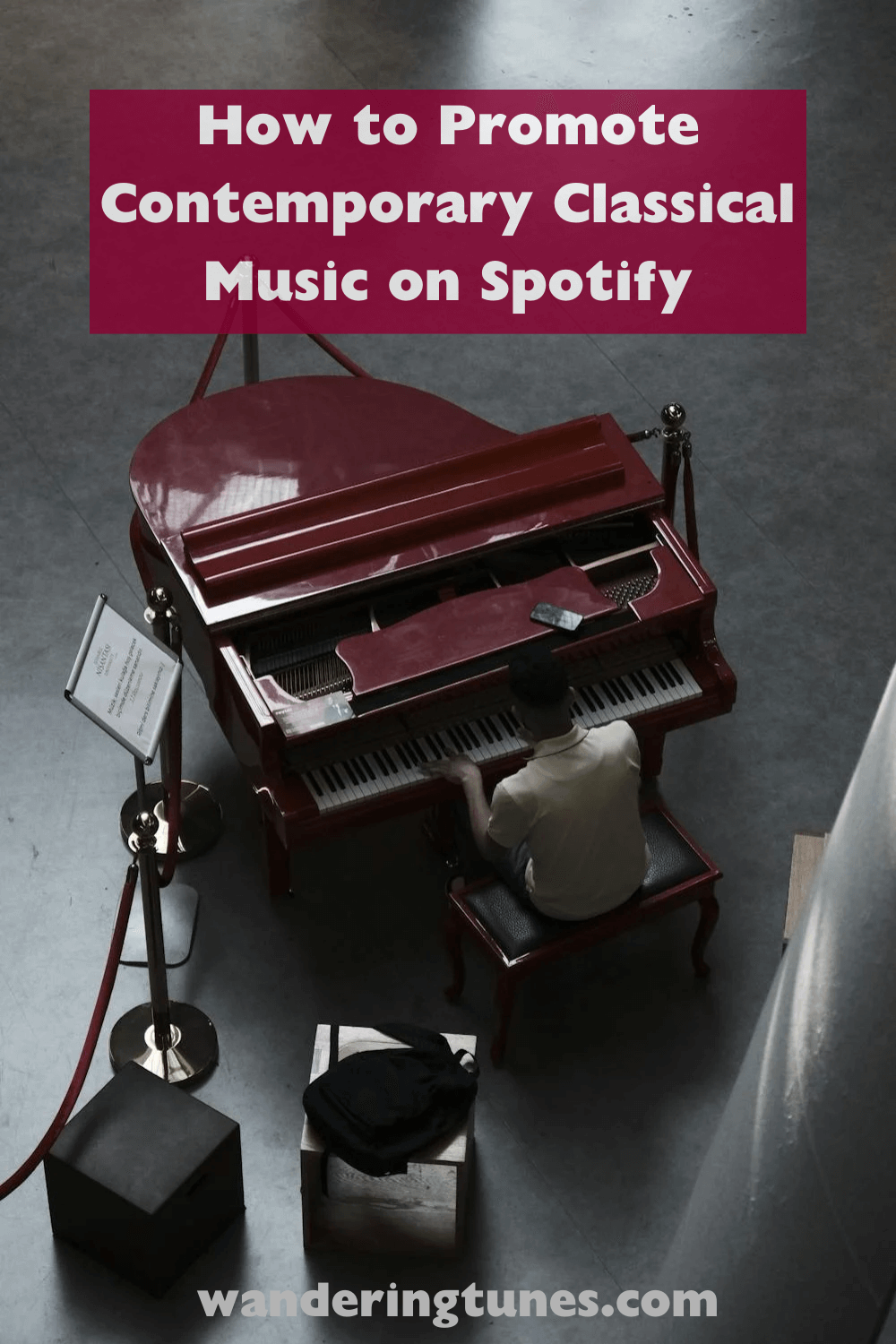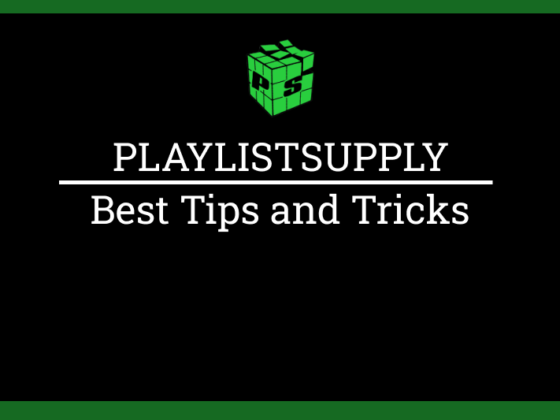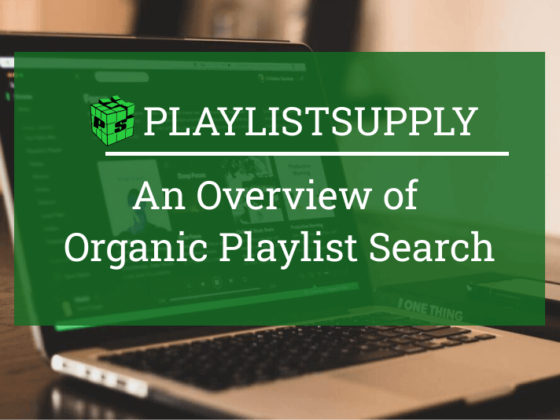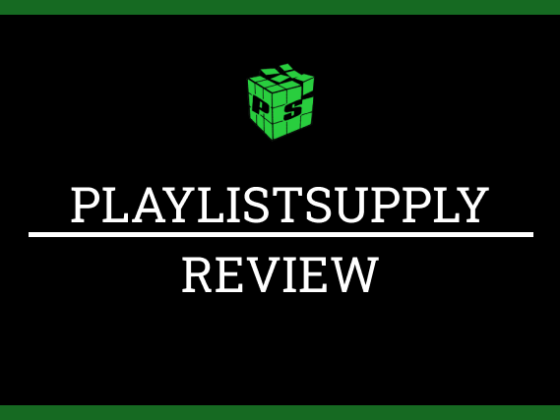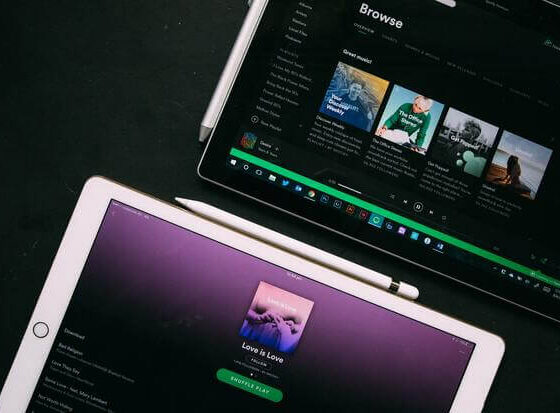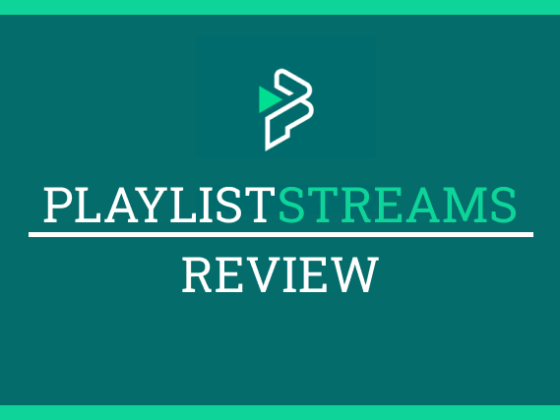In the modern music industry of today, streaming has become one of the most crucial ways for upcoming artists to get their music heard. Spotify, the largest music streaming service with over 345 million monthly active users, offers classical musicians tremendous opportunities to reach new listeners through playlist placement.
However, breaking through on Spotify requires an understanding of its unique algorithm. This article provides tips on how classical independent artists can successfully promote their own music via Spotify user-generated playlists and attract new audiences and music lovers.
Before We Get Started
Make sure your music is on Spotify, Apple Music, and other streaming platforms. If not, use a digital distribution service to get your score on the different streaming platforms. A digital distribution service is some sort of hub that offers you a way to spread your music to different streaming services. Read more on the best digital distribution services.
Submit Your Musical Scores to Spotify Playlists
Now there are two ways to submit music to Spotify playlists, and there are also different kinds of playlists, but that’s for another blog article.
You can use a music submission platform to do all the hard work, or you can do your own research and contact curators by yourself.
Using a Music Submission Platform
This is an easier and faster way of promoting and marketing classical music.
Music submission services are offering you a way to submit your music to curators within your choice of genre. Obviously, these services are not free, but they can open a door and get your music heard by curators.
There are many music promotion services available to independent artist/composer. One Submit for example, offers music submission services to playlists, blogs, and channels, with a guarantee that your music will be reviewed by the playlist owners.
If the curator likes your music and finds it fits his playlist, they will add it to his playlist without additional cost, so it’s up to you to deliver high-standard scores.
The platform is artist-friendly, and if a curator fails to review your music, you will receive your money back.
Read more about Spotify playlist submission.
There are other types of traditional marketing methods, but playlist pitching delivers results fast, but then again, your music needs to be top-notch in order to get results.
You can also check out the best Spotify promotion services out there.
Research Spotify Playlists and Contact Curators
If you have free time and you’re willing to put in the effort, this might be the right option for you. Bear in mind that the success rate is not too high, and curators tend to receive a lot of emails every day, so they might not reply at all. Here’s how to do it:
The first step is to thoroughly research Spotify playlists that fit your music style and that are reaching the right audience for you. While Spotify offers playlists for nearly every genre, niche subgenres such as classical piano have fewer options. Search relevant keywords like “solo piano,” “modern classical,” “contemporary instrumental,” and “classical music” to find suitable playlists. Your classical music audience is most likely listening to these playlists.
Follow any you would be a good fit for and listen to understand the curation style and flow. Pay attention to the number of followers, average monthly listeners, playlist description, and user comments to gauge a playlist’s reach and reception. Studying trusted playlists in your niche provides context for your own pitch.
Find out the curator’s name and figure out how to reach him, whether it’s by social media platforms or direct mail, and contact them politely, asking them if they would be willing to review your music and accept it to their playlist.
Work with a spreadsheet and have an electronic press kit ready; it might help.
Personalize Your Pitch
With any playlist pitch, you must tailor your request to resonate with specific curators. Personalization requires research beyond just listening to the playlist’s contents. Investigate who the curators are by looking at their bio, website, or social media profiles.
Understand their musical tastes, background, geographic location, and audience. This context makes your pitch more persuasive by showing you understand the curator’s goals in creating their playlist. Include details on why you admire their curation style or how you connected with a particular song choice.
Avoid any generic language that could apply to multiple playlists. Demonstrate that your music is a natural fit based on the curator’s vision. Making a personalized connection gives you a better chance of getting playlists added by industry professionals or a music director.
Highlight Your Music’s Unique Story
When pitching classical tracks, it helps to articulate what makes your music unique while still fitting the playlist’s overall vibe. For example, you could mention that your classical etudes expand the classical piano tradition through subtle electronic textures, differentiating you from the rest of the classical music world.
Additionally, you could describe how your compositions blend minimalism with jazz harmony, influenced by your time living abroad or past events. Give curators insight into your creative process to show what distinguishes you from other musicians and contemporary pianists.
Share any interesting experiences that shaped your musical perspective. Provide relevant background that gives context to your recordings. The more compelling your story, the more likely curators will remember your submission. Let your music’s narrative inspire their desire to feature your tracks.
Include Relevant Streaming Statistics
Proving your existing streaming momentum helps build your case for playlist additions. When emailing curators, present any Spotify-specific stats that convey existing listener interest. Mention total followers on your artist profile and monthly listener numbers, which show overall engagement on the platform. Highlight Spotify tracks with strong save and stream counts, especially any viral hits or popular music from recent releases.
If other Spotify playlists have already added you, note those as social proof in marketing efforts. Effective pitches cite strong streaming metrics and good marketing to assure curators that you have an audience on Spotify waiting to listen to your music. Give data-driven evidence supporting your inclusion that fits their playlist goals.
Follow Up Politely
Patience is key when pitching Spotify playlists. Unless you have an existing relationship with curators or significant fame, immediate additions are unlikely. Follow up once or twice politely if you have not received a response after two weeks. Avoid pestering curators excessively, since that tends to lower your chances.
Thank curators when your music gets added, and share the playlist on social media to drive more followers to grow your audience. Building relationships with Spotify curators takes time, but it can pay dividends as you release more music. Always promote playlist features to maximize their discovery potential.
Cross-promote Playlists and Artists
Once you begin getting added to Spotify playlists, opportunities arise to cross-promote with fellow contemporary classical pianists. Create your own high-quality solo piano playlist featuring peers you respect. Introduce each other’s music to your respective fan bases. Collaborate on a shared playlist as “Artist’s Choice” picks. Comment on each other’s songs and playlists as social proof. Engage collaboratively with other contemporary piano artists to tap into each other’s audiences. A rising tide lifts all boats; cross-playlisting allows you to grow your reach while supporting the broader solo piano community.
Claim Your Artist Profile
As a contemporary classical pianist, managing your Spotify artist profile should be a cornerstone of your overall streaming promotion. Start by claiming your Spotify for Artists profile via the desktop app to access key analytics. Customize your profile with your bio, photos, artist playlists, and notable media features.
Make sure fans can easily find and follow you on Spotify. Add your upcoming tour dates and frequently release new singles or albums to keep your profile active. Use Spotify Canvas looping visuals to showcase engaging short videos.
Optimizing your artist profile makes you more discoverable to piano fans across Spotify’s ecosystem.
Pitch Playlists for Each Release
A common promotional mistake is only pitching playlists upon an initial album release. To maximize streaming longevity, you should pitch curators again for subsequent singles. Update playlists that you previously added with new music. Since most playlists aim for a balance of familiarity and discovery, curators appreciate hearing about your latest material.
Provide updates on your progress since your last release to show continued momentum that builds your story. Release consistency and persistent but polite pitching help playlists become more invested in your artist journey. Each release presents a new opportunity to get placement.
Experiment with Spotify Ads
For independent contemporary classical pianists, running highly targeted Spotify ads can be an affordable way to directly reach potential fans. Use Spotify’s data and streaming analytics to determine optimal target audiences and playlists for your ads. Tailor your audio and visual creative to precisely resonate with specific classical music listeners.
Start with small daily budgets and tweak your targeting and messaging based on the resulting stream counts and followers. Consistently advertising new releases over 3-6 months can convert listeners.
Just be sure to analyze performance data regularly and adjust ineffective ads. View ads as an investment in directly connecting with Spotify listeners who will enjoy your music.
Pitching Spotify playlists requires persistence, personalization, and patience. But by thoroughly researching appropriate playlists for your music and developing relationships with curators, contemporary classical pianists can build streaming audiences on Spotify. Listeners turn to curated Spotify playlists as trusted sources to discover music.
Getting added to relevant playlists exposes your music to receptive new fans seeking your precise instrumental style. So leverage Spotify’s unparalleled reach, implement these pitching best practices, and amplify your contemporary classical music today.
